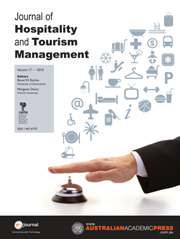Article contents
The Complexities of Experience: a Critical Tourism Response
Published online by Cambridge University Press: 17 July 2012
Abstract
In this article, travel is considered as offering moments of encounter with difference that generate new ideas and therefore new perceptions of being in the world for the individual. The role of the Other — of difference and the unknown — is important in the examination of the travel experience of encounter and Levinas's philosophy of the face-to-face encounter with the Other provides a conceptual framework for understanding the responsive relation to difference. This article also addresses the difficulty of writing about the experience in travel. It takes a critical approach through a flexible and interpretative method that attempts to represent the ephemeral nature of the travel experience in a manner that brings the traveller's interactive response to place and encounter to be part of the research. Three ‘voices’ — theory, critical-creative and narrative — reveal aspects of the relationship of the individual and difference for both traveller and researcher, and together offer a three-dimensional tool for tourism studies. This article aims to contribute to understanding the travel experience and, in the experimentation with mixed methodologies, to contribute to our theoretical frameworks through encouraging the reader to take a different journey of exploration.
- Type
- Special Issue: Beyond the Margins (Critical Tourism and Hospitality)
- Information
- Copyright
- Copyright © The Authors 2012
References
- 4
- Cited by




